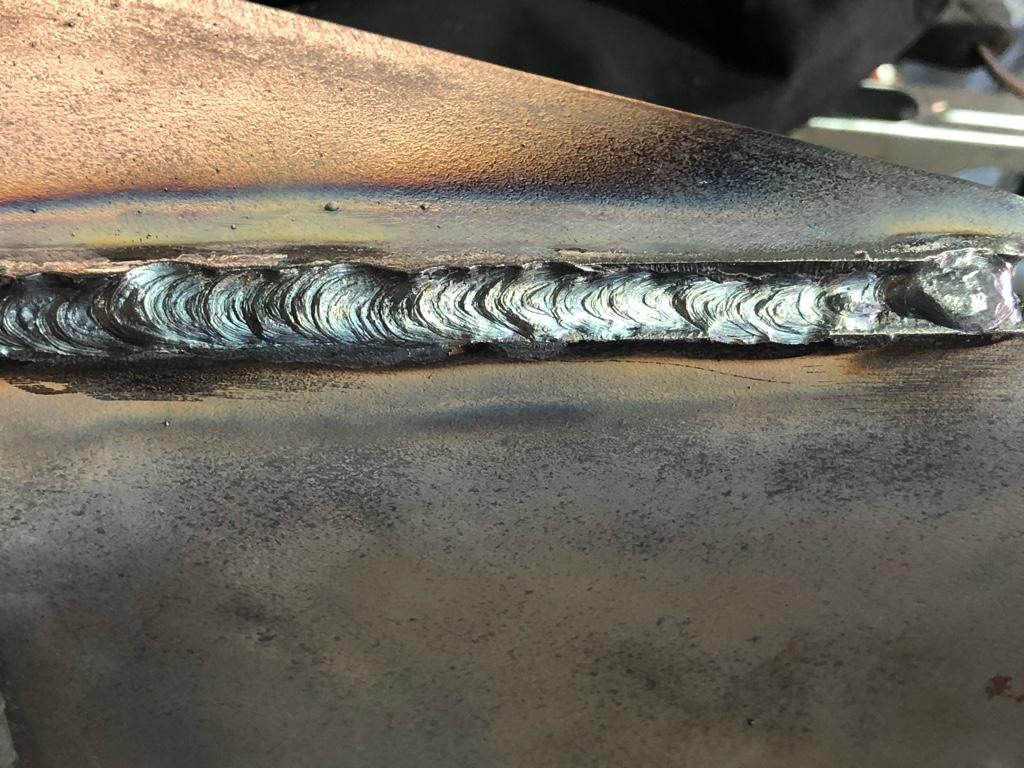Effective Ways to Prevent Weld Undercut in Your Welding Projects
Effective Ways to Prevent Weld Undercut in Your Welding Projects
Blog Article
Crucial Tips for Welders: Preventing Undercut Welding and Ensuring Stronger Weld Joints
In the world of welding, accomplishing resilient and strong weld joints is the keystone of creating premium work. One common obstacle that welders usually run into is undercut welding, which can jeopardize the integrity of the weld joint.

Comprehending Undercut Welding
Undercut welding is a common welding flaw that occurs when the weld metal fails to effectively fill the groove and causes a groove-like depression along the weld grain. This defect deteriorates the weld joint, making it at risk to splitting and failing under tension. Damaging can be brought on by different variables, consisting of excessive welding existing, high welding speed, inappropriate electrode angle, incorrect electrode size, and bad welding method.
One of the primary factors for undercut welding is an inequality between the welding existing and the welding rate. If the welding current is too expensive or the welding rate is also fast, the weld metal might not adequately fill up the groove, bring about undercutting. In addition, utilizing an electrode that is also large can result in a similar result, as the excess steel can not properly stream right into the groove.
To avoid undercut welding, welders must guarantee they are making use of the correct welding parameters, maintain an appropriate electrode angle, select the proper electrode dimension, and technique correct welding strategies. By addressing these elements, welders can reduce the danger of undercutting and produce stronger, much more dependable weld joints.
Correct Welding Strategy
Efficient welding technique plays an essential role in making certain the high quality and integrity of weld joints. One basic element of proper welding strategy is preserving the correct angle and range in between the welding weapon and the workpiece.
In addition, a constant and constant hand movement is important for creating strong and durable weld joints. Welders need to aim for smooth, consistent motions to guarantee also distribution of the weld product. Appropriate adjustment of the welding gun and filler product is additionally crucial to achieving ideal penetration and combination.
Furthermore, managing the warmth input and selecting the proper welding parameters based on the product being welded are important consider attaining high-grade welds - Preventing weld undercut. Welders ought to adhere to the recommended settings given by welding procedure specs and readjust them as needed based upon the specific demands of the task. By mastering appropriate welding strategies, welders can significantly improve the stamina and reliability of their weld joints
Choosing the Right Electrode
Keeping the correct angle and range in between the welding gun and the workpiece is basic when considering the significance of selecting the ideal electrode in welding applications. The choice of electrode plays an essential function in figuring out the top quality and toughness of the weld joint. Electrodes can be found in numerous kinds, each made for details objectives and products.
To start with, picking the ideal electrode size is vital. Thinner electrodes appropriate for click for info welding slim products, while thicker electrodes are better for thicker materials and higher heat applications. Matching the electrode size to the thickness of the workpiece helps achieve a balanced weld.
Second of all, recognizing the product make-up of the electrode is essential. Various electrodes are made for welding details products like steel, stainless-steel, aluminum, or cast iron. Using the proper electrode product makes certain excellent combination and lessens the danger of defects in the weld.
Lastly, considering the welding this website setting and technique is essential when choosing the electrode kind. As an example, specific electrodes are better matched for vertical or overhanging welding settings, while others function well for flat or horizontal placements. Picking the ideal electrode based upon the welding strategy improves the overall weld quality and honesty.
Preparing the Base Metal
To ensure a successful welding procedure, what first steps should be taken when preparing the base metal for welding? In addition, any kind of existing weld material or residue from previous welding must be gotten rid of to guarantee a tidy surface area for the brand-new weld.

Conducting Post-Weld Examinations

After carrying out these evaluations, welders should compare the results versus sector requirements and job requirements to ensure that the weld joint fulfills all necessary criteria. Any insufficiencies or deviations uncovered throughout the post-weld inspection ought to be immediately resolved via proper restorative measures to assure the weld's stability. By carefully doing post-weld evaluations and promptly resolving any type of issues, welders can promote the high quality and reliability of their job, eventually adding to the security and long life of the bonded structures.
Final Thought

In conclusion, stopping undercut welding and guaranteeing more powerful weld joints require a combination of appropriate welding technique, picking the best electrode, preparing the base steel correctly, and performing post-weld evaluations. By recognizing the root causes of undercut welding and executing the necessary safety measures, welders can generate top notch weld joints that meet market criteria and guarantee the architectural honesty of the welded components.
Undercut welding is a typical next welding issue that occurs when the weld steel falls short to correctly fill up the groove and results in a groove-like clinical depression along the weld bead (Preventing weld undercut). Undercutting can be caused by different variables, including extreme welding existing, high welding rate, improper electrode angle, incorrect electrode dimension, and inadequate welding strategy
One of the primary factors for undercut welding is an imbalance between the welding present and the welding rate. If the welding current is also high or the welding rate is too quickly, the weld steel might not properly fill up the groove, leading to damaging.Keeping the proper angle and distance between the welding gun and the workpiece is fundamental when considering the significance of selecting the ideal electrode in welding applications.
Report this page